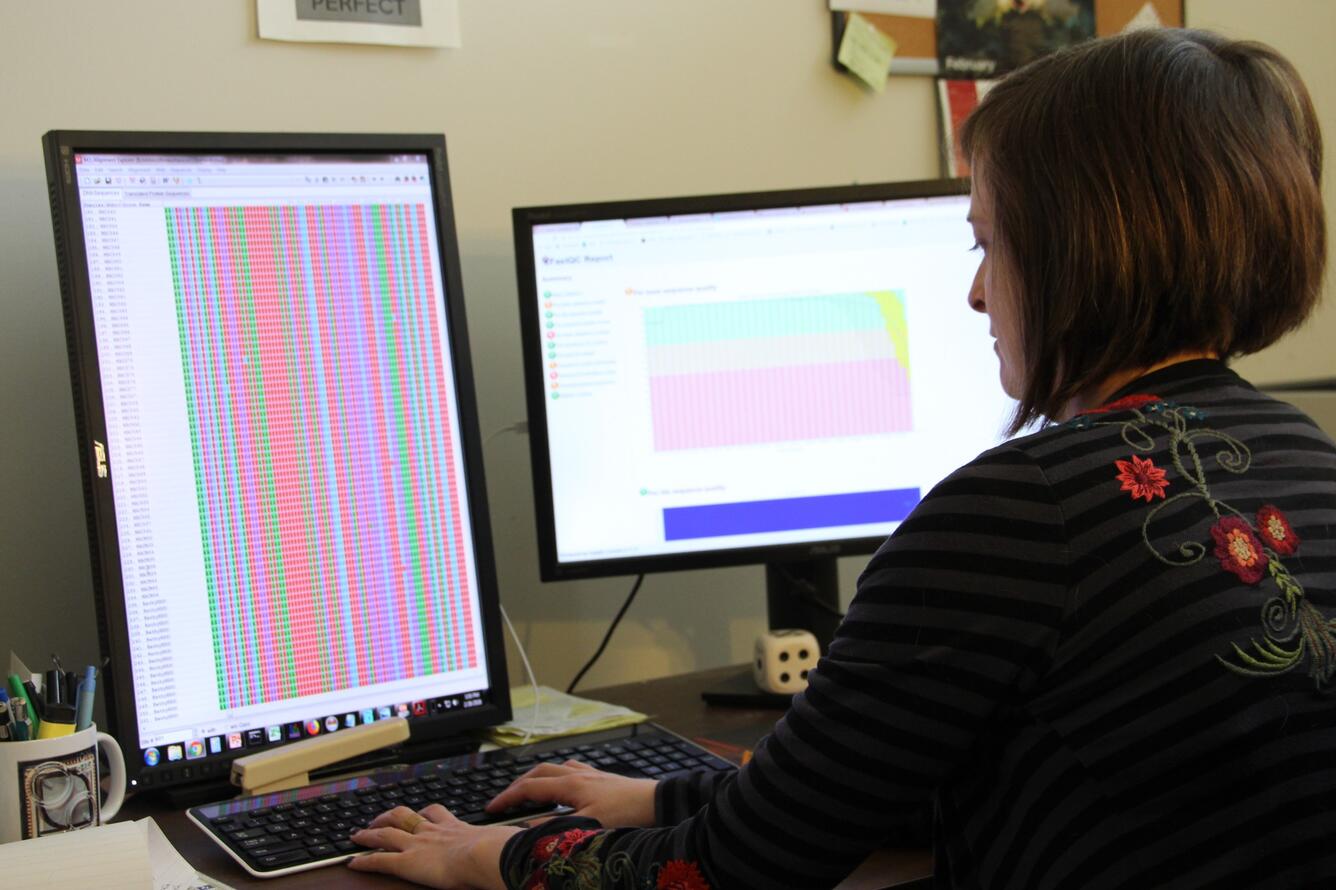Bioinformatics is a relatively new field of science that incorporates elements of biology and computer science together for the purpose of developing efficient and robust methods for the analyses and interpretation of large amounts of biological data, typically DNA or RNA sequence data.
The capabilities of Leetown Science Center for data collection include Illumina sequencing platforms, ABI3130s for Sanger sequencing and microsatellite genotyping, and a NanoString for high throughput targeted gene expression studies. Researchers at Leetown Science Center routinely use these tools for collection of RNA-seq, shotgun genomic, metagenomic, and amplicon sequencing data from prokaryotes, invertebrates, vertebrates and environmental samples of special interest. Each experiment may generate hundreds of millions of sequence reads that necessitate high performance computers running specialized bioinformatic pipelines to process, analyze, synthesize, and visualize the data efficiently, depending on the goals of the project, such as genome assembly, gene annotation, identifying components of a microbial community, genomic marker development, and differential gene expression. Examples of bioinformatics tools used by LSC scientists include CLC Genomics Workbench, Geneious, Trinity, Mothur, Qiime, MG-RAST, and Phyloseq on Windows and Linux operating systems.

Bioinformatics is a relatively new field of science that incorporates elements of biology and computer science together for the purpose of developing efficient and robust methods for the analyses and interpretation of large amounts of biological data, typically DNA or RNA sequence data.
The capabilities of Leetown Science Center for data collection include Illumina sequencing platforms, ABI3130s for Sanger sequencing and microsatellite genotyping, and a NanoString for high throughput targeted gene expression studies. Researchers at Leetown Science Center routinely use these tools for collection of RNA-seq, shotgun genomic, metagenomic, and amplicon sequencing data from prokaryotes, invertebrates, vertebrates and environmental samples of special interest. Each experiment may generate hundreds of millions of sequence reads that necessitate high performance computers running specialized bioinformatic pipelines to process, analyze, synthesize, and visualize the data efficiently, depending on the goals of the project, such as genome assembly, gene annotation, identifying components of a microbial community, genomic marker development, and differential gene expression. Examples of bioinformatics tools used by LSC scientists include CLC Genomics Workbench, Geneious, Trinity, Mothur, Qiime, MG-RAST, and Phyloseq on Windows and Linux operating systems.


